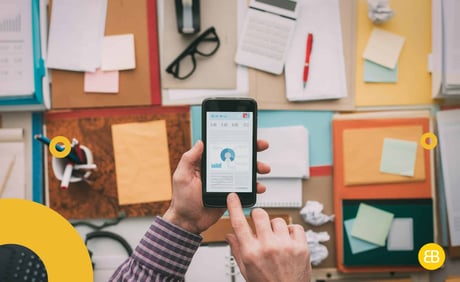Table of Contents
The world of mobile apps is here to stay, and in a big way. Let’s look at some examples of mobile apps that have facilitated massive growth for global brands, and look at how our ever-increasing engagement with smartphone technology is changing the way we do business.
MLB: A lesson in feature tiers
For the average Australian, it can be hard to drum up interest in the diamond fielded sport of baseball. But the Major League Baseball mobile app is worth checking out for anyone interested in monetizing app technology. At Bat is a thing of beauty, both elegant in design and smartly structured in pricing.
MLB truly understands its fanbase and the ways different customers interact with baseball, with something for everyone, from the true fanatic to the casual baseball fan. Tiers include:
- Scores, news, favorite team, and player tracking
- Additional home and away audio feeds
- A vast library of video clips and segments
Almost every game can be streamed live, and every match is archived for later watching.
The pricing structure is enticing, making it reasonable for casual fan to up their commitment as their team hits the finals series. For any digital marketer or app developer looking for guidelines on how to structure freemium-style pricing, MLB is the muse you’re looking for.
It’s not just about media
A few years ago, the app ecosystem was dominated by content and entertainment-focused apps. In 2015, games generated 85% of app revenue (about 34.8 billion). Moving towards 2020, we’re seeing apps gain popularity in many different sectors, including anything from:
- Ridesharing
- Food ordering
- Government
- Retail
- Airlines
In fact, between 2016 and 2020, the number of yearly downloads is expected to double to about 284 billion. It’s absolutely incumbent for companies of all sizes to ensure they can leverage mobile technology to benefit their business, whether this is through developing an app with EB Pearls or updating their website design.
The power of messaging
Remember back in 2014 when Facebook acquired WhatsApp? Many have debated since then whether the $19 billion price tag for what amounted at the time to a gloried SMS app was really worth it.
In 2014, WhatsApp was growing at an outstanding rate. Though it had less than half the users of Facebook messenger, there were about a million signups a day. It was one of the few apps that actually posed a threat to Facebook messenger as an online instant messaging platform.
The acquisition of WhatsApp was about more than just signups. As Google’s own new chat app ‘Allo’, showed, integrating AI into chat conversations is just the tip of the iceberg when it comes to utilizing messenger apps for business. As our homes become integrated by smart hubs like Alexa and Google Home, the power of conversation as a gateway to business growth can be harnessed to improve both customer retention and, ultimately, downloads and sales.
Uber + Maps
The Uber app and Google Maps need no introduction. Both are widely successful at doing what they do. But there’s more to it than booking a ride home from the pub or looking up your next investment property.
Not only does Uber leverage maps technology, but you can also book an Uber through the Maps app and even use the same technology that temporarily connects you with your driver to share your location live with a friend. Though it doesn’t happen often, when two apps get on the same page and start collaborating, there’s a lot to be gained.
ASOS: The rise of smart retail
IRDX RASO, or ASOS as they are better known, is a global fashion brand and online retailer that firmly believes in the power of free shipping and the mobile experience. Through a mix of their own labels and other collections, ASOS has seen massive growth in mobile shopping in particular over the last few years, contributing to their growth as a global fashion retailer.
Skyrocketing sales
In October of 2016 the company reported a 26% rise in retail sales, largely thanks to mobile. There’s both the iOS and Android app, and ASOS is mobile friendly for web browsers as well. Most importantly, the company isn’t shirking from a feature rich mobile experience:
“We have also improved the quality of product imagery and the performance of our Video Catwalk function,” says ASOS chief executive Nick Beighton. “Customer feedback and engagement has been very positive, with the new app earning a 5-star rating in App Stores worldwide.”
The fashion brand continues to grow from strength to strength, publishing over 60,000 pieces of fashion content a month. Combined with mobile, this lead to:
- 54% growth in followers (19 million in 2016)
- Page visit growth of 22%
- 30% order growth
- 3% growth in basket value average
For companies of any size this kind of growth is astounding, and it’s the push to mobilize the user experience that has helped ASOS become a powerhouse in global fashion retail.
Case Study: Dominos keeps it hot
It’s hard not to like pizza, but how do you mobilize growth on smartphones for something as simple as an Italian slice? Global takeaway brand Domino’s has led the charge in using self-service mobile apps to improve the entire customer experience.
As early as 2015 a full three quarters of Domino’s pizza orders were made online, with half of those orders coming through a mobile app or smart device. Boasting features like:
- Siri-like voice recognition
- GPS triggered reminders
- Ordering through Pebble, Android Wear and Apple Watch.
Dominos shows us how apps can be used to provide efficiency of service. With so many orders happening online, Domino’s staff are free to spend more time making and delivering pizzas. That’s one way this global brand is facilitating excellent growth through mobile technologies.
Food delivery apps
Domino’s isn’t the only mobile food app stimulating commercial growth. In a report for Business Insider’s Business Intelligence Research Service, analyst Evan Bakker found:
- Among Quick Service Restaurants (QSRs) order-ahead mobile apps will see sales to the tune of $38 billion by 2020
- Order-ahead apps improve customer loyalty, increase ticket size per purchase and raise purchase frequency. This equates to an additive effect for QSRs using order-ahead. It’s more than just a replacement for in store ordering… order-ahead is a value add.
- In store self-service kiosks will help people get more comfortable with using order-ahead apps
- New fast-casual food stores will find it easier to get onboard with the help of aggregator services
UberEATS, Deliveroo and Menu log are just some of the examples of order-ahead and food delivery technologies driven by powerful mobile experiences.
Using mobile apps to leverage business expansion
Utilizing mobile technology when it comes to business development, lateral expansion and growth can provide a myriad of benefits. From increasing customer orders, to improving customer retention and expanding brand awareness, mobile technology prompts both potential and current customers to engage (or continue to engage) with your business. Contact EB Pearls today to discuss the future of your business through mobile technology.

Khusbu ensures top-quality project delivery while fostering growth. Her dedication to excellence drives her to be a best-in-class Project Manager.
Read more Articles by this Author
